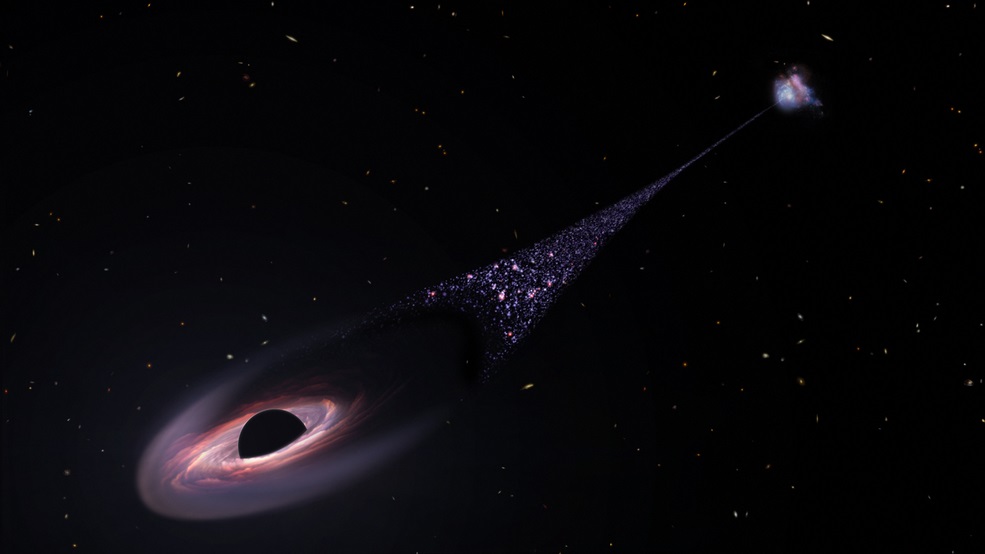NASA has identified a "runaway" black hole speeding through the universe, which they've dubbed an "invisible monster on the loose." This phenomenon has piqued the interest of researchers, as it leaves an unprecedented trail of newly formed stars in its wake.
According to NASA, this supermassive black hole is so fast that it could travel from Earth to the moon in only 14 minutes if it were within our solar system. The black hole has created a 200,000-light-year-long "contrail" of newborn stars - a trail twice the diameter of the Milky Way.
Interestingly, rather than consuming the stars ahead of it, the black hole is pushing gas in front of it, leading to new star formation in a narrow corridor. NASA humorously noted that the black hole is moving too quickly to stop for a "snack."

This is an artist's impression of a runaway supermassive black hole that was ejected from its host galaxy as a result of a tussle between it and two other black holes.
The trail of stars created by the black hole is almost half as bright as its host galaxy. The black hole is situated at the end of a column in its parent galaxy, with an exceptionally bright knot of ionized oxygen at the outermost tip.
Pieter van Dokkum of Yale University explained, "We think we're seeing a wake behind the black hole where the gas cools and is able to form stars. So, we're looking at star formation trailing the black hole." He compared the phenomenon to the wake behind a ship.
Scientists are still determining the exact mechanism behind the black hole's behavior. They believe that either the gas is being shocked and heated due to the black hole's motion, or radiation is being caused by an accretion disk around the black hole.
The Hubble Space Telescope captured this unique sight by chance. Van Dokkum, who was originally studying globular star clusters in a nearby dwarf galaxy, discovered the black hole and its remarkable trail of stars. He described the finding as "pure serendipity."

This Hubble Space Telescope archival photo captures a curious linear feature that is so unusual it was first dismissed as an imaging artifact from Hubble's cameras.
Van Dokkum and his team used the W. M. Keck Observatories in Hawaii to conduct follow-up spectroscopy, ultimately concluding that they were witnessing the aftermath of a black hole speeding through the galaxy.
This black hole, which weighs as much as 20 million suns, is likely the result of multiple collisions between supermassive black holes, a rare and unusual cosmic event. Astronomers believe the runaway black hole was set free after three galaxies merged, bringing together their respective supermassive black holes and forming a "chaotic and unstable configuration."
Researchers plan to confirm their explanation for the black hole using the James Webb Space Telescope and the Chandra X-ray Observatory for follow-up observations.



